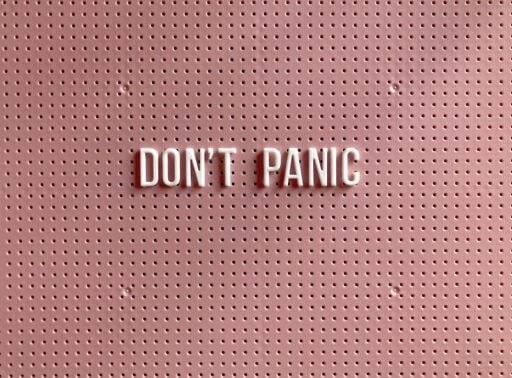Imagine yourself going about your day, just like any other day, when suddenly, out of nowhere, your heart starts pounding, your palms become sweaty, and a wave of fear rushes over you. You find it hard to breathe, your thoughts race, and you may even feel like you’re losing control. These terrifying moments are known as panic attacks, but have you ever wondered how they actually start? In this article, we will explore the origins of panic attacks, unraveling their mysterious beginnings and shedding light on the factors that contribute to their occurrence.

What is a Panic Attack?
Definition of a panic attack
A panic attack is an intense and overwhelming episode of fear and anxiety that can strike suddenly and without warning. It is characterized by a range of distressing physical and psychological symptoms that can feel overwhelming and uncontrollable. During a panic attack, you may experience an overwhelming sense of impending doom, along with an intense desire to escape the situation. Panic attacks can be both frightening and debilitating, often leading to a significant impact on daily life.
Common symptoms of a panic attack
Panic attacks manifest themselves through various physical and psychological symptoms. Some common physical symptoms include rapid heart rate, chest pain, shortness of breath, sweating, trembling, dizziness, and a feeling of choking or suffocating. Additionally, individuals may experience hot or cold flashes, nausea, abdominal discomfort, and a tingling sensation in their extremities. Psychological symptoms may include a sense of unreality, detachment from oneself, intense fear or dread, a fear of losing control, and a fear of dying.
Causes of Panic Attacks
Genetic factors
Research suggests that there may be a genetic predisposition to panic attacks. If you have a family history of panic disorder or other anxiety disorders, you may be more vulnerable to experiencing panic attacks yourself. This genetic link may involve certain genes responsible for regulating stress and fear responses in the brain.
Brain chemistry
Imbalances in brain chemistry, specifically pertaining to neurotransmitters such as serotonin and norepinephrine, have been implicated in panic attacks. Neurotransmitters play a crucial role in transmitting signals between nerve cells in the brain, and an imbalance can disrupt the normal functioning of the brain’s fear and stress response systems, potentially triggering panic attacks.
Environmental factors
Environmental factors can significantly contribute to the occurrence of panic attacks. Chronic stress, substance abuse, childhood adversity, and exposure to violence are just a few examples of environmental factors that can increase the likelihood of experiencing panic attacks. These external influences can contribute to the development of anxiety and trigger panic attacks in susceptible individuals.
Major life changes
Major life changes, such as job loss or career transitions, divorce or relationship issues, moving to a new location, or the death of a loved one, can be significant triggers for panic attacks. These life-altering events can cause substantial emotional distress and upheaval, leading to heightened anxiety and the onset of panic attacks.
Stressful situations
High-stress situations, whether related to work, academics, finances, or personal conflicts, can act as triggers for panic attacks. The pressure and demands associated with these situations can overwhelm an individual’s coping mechanisms, leading to increased anxiety levels and the potential for panic attacks to occur.
Past traumatic experiences
Unresolved traumatic experiences from the past, such as physical or emotional abuse, accidents, or the witnessing of traumatic events, can contribute to the onset of panic attacks. Trauma can significantly impact an individual’s mental and emotional well-being, often resulting in heightened anxiety levels and an increased vulnerability to experiencing panic attacks.
Phobias and specific triggers
Phobias, which are intense and irrational fears of specific objects, situations, or activities, can provoke panic attacks. For individuals with phobias, encountering their feared triggers can trigger a cascade of intense fear and anxiety, ultimately culminating in a panic attack. The fear of experiencing a panic attack in public, known as panic disorder with agoraphobia, can also lead to avoidance behaviors and further exacerbate the cycle of panic attacks.
Understanding the Role of Genetics
Family history and panic disorder
Research has shown that individuals with a family history of panic disorder or other anxiety disorders have an increased risk of developing panic attacks themselves. The heritability of panic disorder suggests a genetic component in its manifestation, indicating that genetic factors play a significant role in determining an individual’s susceptibility to panic attacks.
Genetic mutations and vulnerabilities
Certain genetic mutations and vulnerabilities may contribute to the development of panic attacks. Studies have shown associations between specific genes and panic disorder, particularly those involved in regulating the stress response and fear circuits in the brain. These genetic variations can increase an individual’s reactivity to stress and heighten their likelihood of experiencing panic attacks.
Impact of Brain Chemistry
Neurotransmitter imbalances
Neurotransmitters, the chemical messengers in the brain, play a crucial role in regulating mood, emotions, and the body’s stress response. Imbalances or dysregulation of neurotransmitters, such as serotonin and norepinephrine, have been implicated in panic attacks. Reduced levels of serotonin, for example, can lead to heightened anxiety and increased vulnerability to panic attacks.
Hormonal influences
Hormonal influences can also impact the occurrence of panic attacks. Fluctuations in hormones, particularly during periods such as pregnancy or menopause, can contribute to increased anxiety levels and a greater susceptibility to panic attacks. Additionally, hormonal imbalances associated with certain medical conditions can also influence the frequency and severity of panic attacks.
Nervous system abnormalities
Abnormalities in the functioning of the nervous system can contribute to the development of panic attacks. The autonomic nervous system, responsible for regulating automatic bodily functions, can become overactive or dysregulated, leading to heightened arousal and the manifestation of physical symptoms associated with panic attacks. These nervous system abnormalities can result from a combination of genetic and environmental factors.

Environmental Factors
Substance abuse
Substance abuse, including alcohol and drug use, can significantly impact the occurrence of panic attacks. Recreational drugs or excessive alcohol consumption can alter brain chemistry, disrupt neurotransmitter function, and exacerbate anxiety symptoms. Substance abuse can both trigger panic attacks and worsen their severity and frequency in individuals who are already predisposed to panic disorder.
Chronic stress
Chronic stress, whether stemming from work, personal relationships, or other sources, can contribute to the development of panic attacks. Prolonged exposure to stressors can overwhelm an individual’s ability to cope, leading to increased anxiety levels and an increased vulnerability to panic attacks. Managing and reducing chronic stress is essential in preventing or mitigating the occurrence of panic attacks.
Childhood adversity
Experiencing childhood adversity, such as neglect, abuse, or significant life stressors, can have long-lasting effects on an individual’s mental health. Adverse childhood experiences can increase the risk of developing anxiety disorders, including panic disorder, later in life. The impact of childhood adversity on brain development, coping mechanisms, and stress response systems can contribute to the occurrence of panic attacks.
Exposure to violence
Exposure to violence, whether as a victim or witness, can have a profound impact on an individual’s mental well-being. Traumatic events involving violence can lead to heightened anxiety levels, the development of post-traumatic stress disorder (PTSD), and an increased vulnerability to experiencing panic attacks. Supportive interventions and therapy can be crucial in addressing the psychological effects of exposure to violence.
Effects of Major Life Changes
Job loss or career transitions
Job loss or significant career transitions can cause immense stress and anxiety, potentially triggering panic attacks. The uncertainty and financial strain associated with these situations can lead to heightened worry and fear, thereby increasing the risk of panic attacks. Seeking support from loved ones and professional guidance can help individuals navigate these challenging transitions and reduce the impact on their mental well-being.
Divorce or relationship issues
Divorce or relationship issues can be emotionally distressing, and the resulting turmoil can contribute to the occurrence of panic attacks. The end of a significant relationship can evoke feelings of grief, loss, and uncertainty, often accompanied by heightened anxiety. It is crucial to prioritize self-care and engage in healthy coping mechanisms to manage the emotional toll of divorce or relationship difficulties and reduce the likelihood of panic attacks.
Moving to a new location
Moving to a new location can be both exciting and stressful, potentially triggering panic attacks. The unfamiliarity of a new environment, coupled with the challenges of adjusting to a different place, can provoke anxiety and overwhelm individuals. It is important to proactively seek support and build a support network to ease the transition and promote emotional well-being.
Death of a loved one
The death of a loved one can bring about intense grief and emotional upheaval, often leading to heightened anxiety levels and the potential onset of panic attacks. The loss of someone significant in one’s life can disrupt feelings of security and stability, causing immense distress. Grief counseling, support groups, and self-care practices can aid in navigating the grieving process and minimizing the impact on mental health.

Triggers in Stressful Situations
Work-related pressure
High-pressure work environments and demanding job responsibilities can significantly contribute to stress and trigger panic attacks. The constant pressure to meet deadlines, perform at a high level, and manage work-related stressors can overwhelm individuals, leading to heightened anxiety and an increased propensity for panic attacks. Implementing stress management techniques, setting healthy boundaries, and seeking support can help individuals effectively cope with work-related stressors and reduce the risk of panic attacks.
Academic stress
Academic stress, such as exams, deadlines, and the pressure to succeed academically, can be a triggering factor for panic attacks, particularly among students. The intense focus on performance, the fear of failure, and the pressure to meet academic expectations can induce heightened anxiety levels. Developing effective study habits, seeking academic support, and practicing self-care can aid in managing academic stress and reducing the occurrence of panic attacks.
Financial difficulties
Financial difficulties and the associated worries and insecurities can be significant stressors that contribute to panic attacks. The strain of managing financial obligations, mounting debts, or job insecurity can lead to chronic stress and heightened anxiety levels. Seeking professional financial guidance, budgeting, and adopting healthy coping mechanisms can help alleviate financial stress and minimize the risk of panic attacks.
Personal conflicts
Personal conflicts, whether within relationships or friendships, can create emotional turmoil and exacerbate anxiety levels, potentially leading to panic attacks. The strain of unresolved conflicts, the fear of confrontation, and the resulting emotional distress can contribute to heightened anxiety and an increased vulnerability to panic attacks. Engaging in open and honest communication, seeking professional mediation where helpful, and practicing self-care can support healthier conflict resolution strategies and reduce the impact on mental well-being.
Unresolved Traumatic Experiences
Physical or emotional abuse
Individuals who have experienced physical or emotional abuse may have unresolved trauma that increases their susceptibility to panic attacks. The long-lasting effects of abuse can manifest as heightened anxiety, hypervigilance, and a heightened fear response, making individuals more prone to experiencing panic attacks. Seeking therapy and trauma-focused interventions can help individuals process and heal from past abuse, reducing the likelihood of panic attacks in the future.
Accidents or near-death experiences
Experiencing accidents or near-death experiences can produce trauma that impacts an individual’s mental health, potentially leading to panic attacks. The fear, helplessness, and residual trauma associated with such events can result in heightened anxiety levels and a heightened perceived threat of danger. Effective trauma therapy and support can assist individuals in addressing the psychological impact of accidents or near-death experiences, minimizing the risk of panic attacks.
Witnessing traumatic events
Witnessing traumatic events, such as accidents, violence, or natural disasters, can have a profound impact on an individual’s mental well-being. The distressing images and memories associated with witnessing such events can increase anxiety and trigger panic attacks. Supportive therapy, trauma-focused interventions, and coping strategies can aid individuals in processing their experiences and managing the ensuing anxiety, reducing the occurrence of panic attacks.
Phobias and Panic Attacks
Specific phobias as triggers
Specific phobias, intense and irrational fears of particular objects, situations, or activities, can act as triggers for panic attacks. For example, a fear of heights (acrophobia) could induce panic attacks when confronted with tall buildings or bridges. Specific phobias can elicit a heightened fear response, ultimately leading to a panic attack. Exposure therapy and cognitive-behavioral interventions can help individuals confront and manage their specific phobias, reducing the likelihood of panic attacks.
Panic disorder with agoraphobia
Panic disorder with agoraphobia involves the fear and avoidance of situations or places where escape may be challenging or embarrassing. Individuals with agoraphobia often avoid public spaces, crowded areas, or situations that they perceive as overwhelming. The fear of experiencing a panic attack in public or being unable to escape can trigger heightened anxiety levels and panic attacks. Treatment for panic disorder and agoraphobia typically involves a combination of therapy, medication, and gradually exposing individuals to their feared situations to reduce avoidance behaviors and manage panic attacks.
Social anxiety and panic attacks
Social anxiety, characterized by an intense fear of social situations, can predispose individuals to panic attacks. The fear of judgment, embarrassment, or scrutiny in social settings can trigger heightened anxiety and culminate in panic attacks. Cognitive-behavioral therapy and social skills training can help individuals with social anxiety develop coping mechanisms, challenge negative thoughts, and manage their anxiety effectively, reducing the likelihood of panic attacks in social situations.
Psychological Factors and Panic Attacks
Cognitive distortions
Cognitive distortions, or irrational thinking patterns, can contribute to the occurrence and severity of panic attacks. Catastrophic thinking, overgeneralization, and personalization are examples of cognitive distortions that can heighten anxiety levels and amplify the fear response. Cognitive-behavioral therapy (CBT) can assist individuals in identifying and challenging these cognitive distortions, ultimately reducing the frequency and intensity of panic attacks.
Anxiety sensitivity
Anxiety sensitivity refers to a heightened fear of experiencing anxiety symptoms, often accompanied by the belief that these symptoms are indicative of a severe or uncontrollable medical condition. Individuals with high anxiety sensitivity may interpret bodily sensations, such as rapid heart rate or shortness of breath, as signs of imminent danger, triggering panic attacks. Gradual exposure to anxiety-provoking situations, along with psychoeducation and cognitive restructuring, can help individuals with anxiety sensitivity manage their fears and reduce the occurrence of panic attacks.
Fear of fear
The fear of experiencing a panic attack itself, known as fear of fear, can perpetuate the cycle of panic attacks. This anticipatory anxiety can heighten an individual’s vigilance and hyper-focus on bodily sensations, ultimately triggering panic attacks. Therapeutic interventions, such as exposure therapy, relaxation techniques, and cognitive restructuring, can help individuals overcome their fear of fear and break the cycle of panic attacks.
In conclusion, panic attacks can have a profound impact on an individual’s life, causing significant distress and disruption. A variety of factors contribute to the onset of panic attacks, including genetic predisposition, brain chemistry imbalances, environmental influences, major life changes, stressful situations, unresolved traumatic experiences, phobias, and psychological factors. Understanding the various triggers and causes of panic attacks can empower individuals to seek appropriate support, implement effective coping strategies, and proactively manage their mental well-being. With proper intervention and treatment, it is possible to minimize the frequency and severity of panic attacks, promoting a better quality of life.